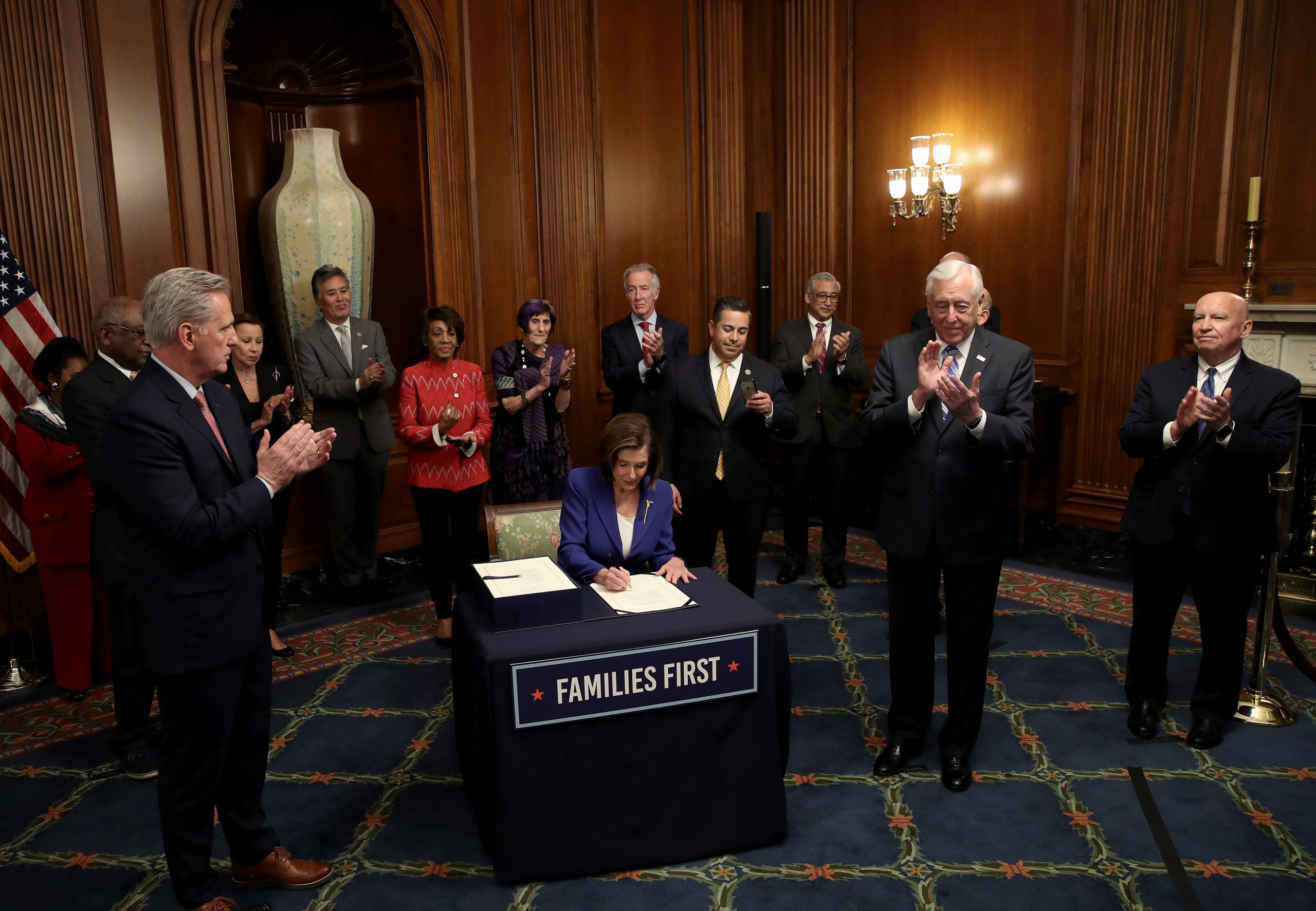As a subcontractor of clinical evaluation services for Social Security Disability, The IMA Group temporarily closed in April due to COVID-19, furloughing most of its entry-level and frontline clinic staff. But when operations resumed the following month, 20% of employees did not return.
Besides collecting unemployment, these workers received a $600 federal weekly unemployment benefit under the Coronavirus Aid, Relief and Economic Security Act (CARES Act). They were collecting more money not working–while also avoiding childcare expenses–than they were earning at their $15 to $18 per hour job.
“When we started calling employees back to work, they felt they were being punished,” says Lisa Letarte, vice president of HR and chief compliance officer at IMA. “When this [$600] was being paid, we couldn’t hire anybody. So we currently have a 28% vacancy rate of 400 frontline positions. We were also getting only 10% of our normal volume of resumes and did not fill one position.”
See also: Navigating the legal questions of workplace returns
Many companies faced the same predicament. The June Jobs Report from the National Federation of Independent Business says that “51% of small business owners reported hiring or trying to hire in July. Forty-four percent reported few or no qualified applicants for positions they were trying to fill.”
[click_to_tweet tweet=”Although unintended, the #CARESAct complicated #hiring across multiple industries. Learn more” quote=”Tweet this story” theme=”style3″]
Although the CARES Act was well-intended, it created a boomerang effect. Many organizations couldn’t find qualified candidates. Some had to raise their hourly rates. Others were handing out signing and retention bonuses. If the legislation is extended at a similar pay rate, employers may continue to struggle with recruiting and retention, trying everything they can to hire quality candidates without busting their budget.
Winners and Losers
After the CARES Act expired in July, Letarte noticed an uptick in applications–from less qualified candidates–to roughly half of its normal volume. So, HR doubled its number of recruiters in early August and introduced signing bonuses for workers who stay for at least 90 days and retention bonuses payable at the end of September.
Meanwhile, more than 30 states have applied for federal jobless benefits that pay an extra $300 a week to unemployed workers.
Related: HRE’s Number of the Day: employment changes
“This additional $300 is going to put us pretty close to where we were when employees received $600,” Letarte says. “We’re going to have the same issues if this goes into effect for as long as it stays in effect.”
In July, Investors Title Insurance Co. conducted 18 interviews after screening 447 applications. But in August, the number of applications and interviews jumped to 565 and 93, respectively, says John Herath, the company’s HR director.

“The CARES Act significantly impacted the quality of candidates who were applying for jobs paying up to $50,000 a year,” he says, adding that none of its now-remote 500 employees were laid off because of COVID-19.
To make recruiting more challenging, the state of North Carolina–where the company is based–dropped the requirement that unemployed workers had to search for another job while collecting unemployment, says Herath.
The company recently hired an HR generalist to assist its dedicated recruiter and changed its recruiting model to target passive, skilled candidates.
Herath says the fixed $600 weekly benefit was too broad, especially since the cost of living varies among states, and should have been calculated like disability benefits that roughly equate to 60% of a person’s income.
Still, he says, it’s hard to argue with people who are afraid to come to work during a pandemic.
“If you can stay home with your kids, earn more than you were making while working but don’t work and don’t need to look for another job, that’s a pretty good deal,” he says. “Any way you do this, there will be winners and losers.”
Ongoing Frustration
According to the Bureau of Labor Statistics, the country’s unemployment rate soared from 3.5% in February to 14.4% in April and then dropped to 10.2% in July. While 16.3 million people are still unemployed, the average person receives $378 a week in unemployment benefits.
Orion Talent discovered that earning $45,000 a year was the breakeven point at which workers made more money staying home–collecting $600 plus their unemployment every week–than working, explains Tim Sweeney, senior partner and vice president of business development at the global recruiter.
So, for jobs paying under $45,000 a year, he says, the number of candidate applications dropped, while no shows for interviews increased. Unfortunately, Sweeney says the CARES Act created a lack of urgency for people to work.
“People weren’t going to take a job that paid less than what they were making through the CARES Act,” he explains. “If CARES is renewed at $300 or $400 per week, you’ll see a [negative] impact but probably less.”
Meanwhile, his company is preparing to enter more applications into its system, employing more experienced recruiters and investing in technology to process more applications and step up communication with job candidates.
“Overall, our clients thought the CARES Act was definitely needed,” Sweeney says. “But as we talked with companies starting to rebound, CARES did become a frustration for them and did create challenges for hiring.”

